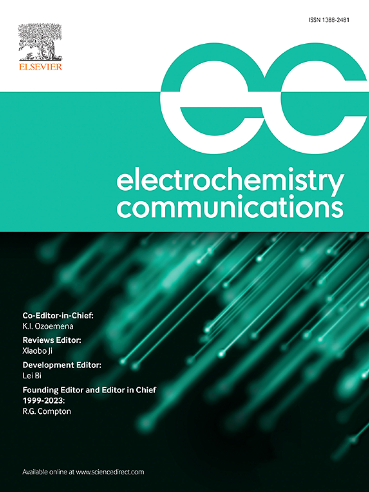两相氧化HMF制FDCA的管状电化学反应器
IF 4.2
3区 工程技术
Q2 ELECTROCHEMISTRY
引用次数: 0
摘要
与传统的平面反应器相比,管式反应器提供了更高的表面体积比。然而,它们很少用于电化学应用。这主要是由于与膜放置相关的挑战,以及在这种设计中缺乏细胞堆叠和集成混合器元素的概念。本研究介绍了两种创新的管式反应器设计,以解决这些限制,而两相电氧化羟甲基糠醛(HMF)到2,5-呋喃二羧酸(FDCA)作为案例研究:混合电极反应器(MER)和瑞士卷反应器(SRR)。MER利用管状3d打印不锈钢或镍泡沫电极来增强流体池内的传质和活性电极面积。SRR,类似于螺旋缠绕膜模块,采用由聚合物垫片分隔的镍泡沫电极的卷起来的组件。在测试中,由于非均匀电极间距引起的不均匀电场,MER表现出较低的FDCA产率(<60%)。相比之下,SRR保持了均匀的电极距离,导致均匀的电场显著提高了性能。SRR获得了更高的FDCA产率(在15 mA cm−2时高达73%),并且显著提高了时空产率(437 molFDCA m−3 h−1),超过了MER和传统的平面反应器设计。这项工作突出了SRR作为一种高效和可扩展的管式反应器的潜力,特别是对于HMF到FDCA的综合双相氧化。本文章由计算机程序翻译,如有差异,请以英文原文为准。

Tubular electrochemical reactors for the biphasic oxidation of HMF to FDCA
Tubular reactors offer increased surface-to-volume ratios compared to conventional planar reactors. Yet, they are seldom utilized in electrochemical applications. This is primarily due to the challenges associated with membrane placement and the lack of concepts for cell-stacking and integrating mixer elements in such designs. This study introduces two innovative tubular reactor designs which address these limitations, while the biphasic electrooxidation of hydroxymethylfurfural (HMF) to 2,5-furandicarboxylic acid (FDCA) serves as case study: the Mixer Electrode Reactor (MER) and the Swiss-roll Reactor (SRR). The MER leverages a tubular 3D-printed stainless steel or nickel foam electrode to enhance mass transfer and active electrode area within the flow cell. The SRR, similar to spiral-wound membrane modules, employs a rolled-up assembly of nickel foam electrodes separated by polymeric spacers. In testing, the MER exhibited low FDCA yields (60%) due to an inhomogeneous electric field caused by non-uniform electrode spacing. In contrast, the SRR maintained a uniform electrode distance, resulting in a homogeneous electric field significantly improving performance. The SRR achieved higher FDCA yields (up to 73% at 15 mA cm−2) and significantly increased space–time yields (437 molFDCA m−3 h−1), surpassing both the MER and conventional planar reactor designs. This work highlights the potential of the SRR as an efficient and scalable tubular reactor, particularly for the integrated biphasic oxidation of HMF to FDCA.
求助全文
通过发布文献求助,成功后即可免费获取论文全文。
去求助
来源期刊

Electrochemistry Communications
工程技术-电化学
CiteScore
8.50
自引率
3.70%
发文量
160
审稿时长
1.2 months
期刊介绍:
Electrochemistry Communications is an open access journal providing fast dissemination of short communications, full communications and mini reviews covering the whole field of electrochemistry which merit urgent publication. Short communications are limited to a maximum of 20,000 characters (including spaces) while full communications and mini reviews are limited to 25,000 characters (including spaces). Supplementary information is permitted for full communications and mini reviews but not for short communications. We aim to be the fastest journal in electrochemistry for these types of papers.
 求助内容:
求助内容: 应助结果提醒方式:
应助结果提醒方式:


